Robots drop off groceries at our front door. Automated chatbots flash up on our screens. And computers sift through job applications using neurological ‘games.’ The weird and wonderful ways in which artificial intelligence is now being used in grocery are at once astounding and (a touch) terrifying. But will they really take fmcg to the next level? Here we pick out 10 of the most exciting developments in AI and look at what they do. And if we need them…
The staffless store
Meet Moby, the mobile store that stocks its own shelves and drives itself
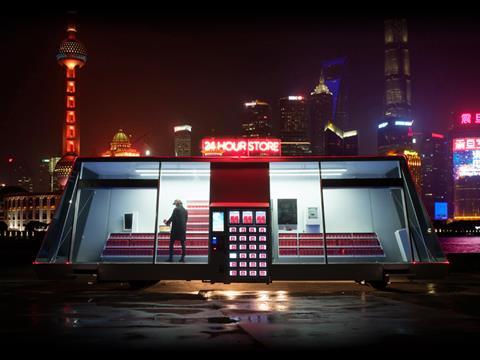
Perhaps the ultimate expression of how AI and grocery will combine in years to come is the Moby - an entirely automated store. There are no staff. It stocks its own shelves. It’s solar powered. And it drives itself to a suitable empty space and sits there waiting for shoppers. Launched in Shanghai in June (it’s currently in beta-testing) it was built by Wheely’s, the Hefei University in China and Himalafy, which specialises in technology that removes the need for humans in shops. Wheely’s estimates each store will cost under $100,000 and makes the bold claim that the portable store is the future of retail. “This is a glimpse of the radical new future of retail, and an existential threat to the world’s convenience stores,” says a spokesman. “In the coming decades, retail as we know it will disappear. Stores will become powered by apps, they will become accessible 24/7, and they will become mobile.”
However, earlier this month consumer behavioural analysts Canvas8 asked 2,300 people in the UK what they thought about staffless grocery stores and 50% said they wouldn’t shop in one, while just 22% said they would. And it’s the prospect of an ‘unexpected item in the bagging area’ type malfunction, but on a larger scale, putting them off.
“People want tech to be seamlessly integrated into their lifestyles, but with all the frustrations self-service machines cause, they’re wary of such advancements,” says Hannah Elderfield, behavioural analyst at Canvas8. “For older generations, the prospect of such a store is daunting. And while self-service machines were hailed as a game-changing solution, 93% of people find them frustrating, with a third claiming to have walked out of a store after having problems with them.”
The availability algorithm
Morrisons uses AI to stock shelves
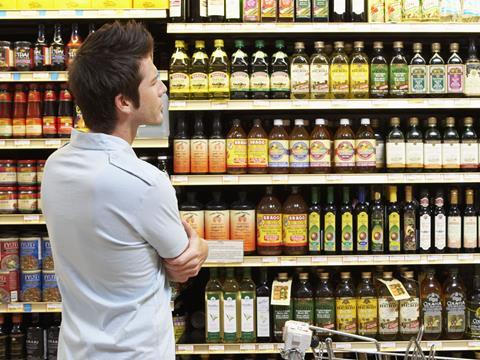
Morrisons is steadily eroding its reputation as a luddite. In March it revealed it was using AI to stock its stores to improve availability - a leap ahead for a supermarket that was still using paper pads to do the same thing back in 2013. In 2015 the supermarket teamed up with Blue Yonder to predict the exact levels of stock required in each of its 491 stores across 130 categories and 26,000 skus. Morrisons CEO David Potts said using AI was “our biggest new initiative” that was nonetheless “capital light, simple to use, saves time… it’s great news all round. There are 30% less gaps. I am excited by it. I feel very confident it’s the right thing.”
That impressive 30% reduction wasn’t the only benefit. “At Christmas, Morrisons improved sales with the technology, as trading patterns were more accurately predicted, allowing the supermarket to shift more product,” says Peter Brady at Orbital Media. “Hours of staff time were also saved in each store where the trial was taking place.”
However, he adds that although the combination of AI and machine learning has automated its way to efficiencies, an old-fashioned human element is still required.
“One thing Morrisons has got right is the ability to enable stores to maintain their local requirements, like the manager in Glastonbury being able to feed into the system when the festival is happening. AI has the ability to take on board a vast amount of data and the more that is inputted, the better the result. But the longer term success of this trial will depend on the company investing time in ongoing data inputting, especially at store level.”
The flip side is that machine-learning can take away a “lot of the manual labour involved in stock replenishment,” says Duncan Grewcock, COO Asia Pacific at Adjuno. “It can prioritise inbound product bookings and deliveries, match demand and inventory levels with stock in the inbound supply chain to push forward inbound shipments containing items running low or out of stock.”
AI is also being used to plan individual shelves in specific stores,” says Jason Shorrock, VP retail strategy at JDA, which works with a “number of UK grocers” to take into account the “localised assortment needs and the specific physical characteristics of the store. This level of granular store optimisation is only possible through the use of machines, that are able to interpret best practice and adapt intelligently to each specific situation.”
The robotic delivery driver
The Starship robot that will boldly go and deliver right to a customer’s front door

Trundling into the future is the AI Starship robot, which made headlines in June when Tesco trialled it to deliver groceries in a smart part of Greenwich.
Questions were immediately raised about whether it was a PR stunt (the news broke the same day three former Tesco executives began a rather more serious trial for fraud) or whether Tesco was worried about vandalism or theft (of the groceries or the robot itself).
However, Tesco is planning a wider roll-out, and co-founders Ahti Heinla and Janus Friis, who founded Skype, are confident their robot has enough security measures built in to resist any attempt to steal it or smash it, including several cameras and a GPS tracker.
The idea is simple: two bags of groceries are placed inside the robot, which locks itself. It then uses collision detector cameras and GPS to head for an inch-specific location at a maximum speed of a pedestrian friendly 4mph. The customer can track progress on a smartphone until it arrives at its destination, at which point the customer is sent a code to open the robot, take their shopping, and the robot trundles off again without so much as a bleep about workers rights.
“Our vision revolves around three zeroes - zero cost, zero waiting time and zero environmental impact,” says Heinla. “We want to do to local deliveries what Skype did to telecommunications. The last few miles often amounts to the majority of the total delivery cost. Our robots are designed using the technologies made affordable by mobile phones and tablets and allow for the cost savings to be passed on to the customer.”
Also in June, Ocado unveiled a driverless delivery van which can carry eight customer orders (up to a maximum weight of 128kg.) Manufacturer Oxbotica believes the vans will be ready to operate without supervision by 2021, and Ocado says the government is “massively supportive” and wants the UK to be a “leader in terms of experimentation and trialling autonomous vehicles”
The futuristic farm tool
Precision agriculture can boost crops by removing the variabilities from farming

It’s not hard to find a dire warning that the future will see the world run out of food thanks to a combination of waste, over-eating and increasingly ruinous weather conditions, but AI will help, says Leor Barth, VP research and development at Priority Software. “AI in food production is being fuelled by Google’s Tensorflow library, widely considered to be the most advanced open-source AI engine in the world,” he says. “One of the most compelling uses of this for the grocery industry is in image recognition, which can play a critical role in optimising food production.” This involves “training AIs to recognise food images” so that based on a “satellite or land-based image of a crop they can determine if the crop is ready for harvesting, or how much irrigation is needed.”
It’s just one of a potential combination of “advanced robotics, sensors and artificial intelligence,” says Alan Bullion, director at Informa’s Agribusiness Intelligence that could be used in the future to “assimilate diverse inputs such as weather conditions, soil conditions, water quality, levels of pest species, presence of non-target species and specific crop strains”.
He also says that “precision agriculture can tackle the variability inherent in farming systems to improve productivity and profitability and reduce risks and the environmental impact from crop inputs. It involves the application of information and communications technology software and hardware to farming. Integrated systems cycle through data collection, its use in decision-support models, and enterprise management, operations, analysis and evaluation. The global market for precision farming technologies is forecast to reach nearly $4 billion by 2018.”
Agriculture has always been open to “effective automation solutions, but recently adoption has moved into overdrive,” says Trevor Wood, AI specialist at Cambridge Consultants. “Whereas ‘drone’ once made people immediately think of military applications, they are now increasingly associated with monitoring the growth and health of crops, or providing guidance on livestock movements Similarly, contrary to the predictions of the Terminator films, robots are more likely to be found in commercial greenhouses than wielding terrifying weapons.”
He adds that there are also opportunities in using AI making more “complex decisions around, for example, crop choice to give the optimal yield based on the data available for a particular field. This is an area where farmers will understandably balk at being told what to by a machine. Every field is different and farmers have a great deal of hands-on experience and knowledge. To gain the best outcomes AI could provide suggestions and indicate what data is most relevant to guide but not replace the farmer’s deep knowledge. As more and more data is collected and stored, the predictions made by these algorithms will continue to improve. This represents too big an opportunity to miss.”
The smart supply chain
Data capture will be vital to ensure survival - and create new jobs
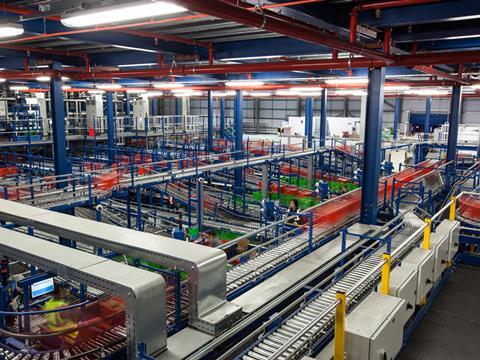
In terms of warehousing, AI can”closely monitor stock levels and enable the optimal volume of products to be ordered, warehoused and available on the physical or virtual shelf,” says Peter Denby, senior VP at Kx. “Retailers with the most effective infrastructure to collect, store and analyse data in real-time will be best placed to ensure their survival and drive future business growth as technology evolves.”
However, collecting the data required to power the AI and “enable really accurate forecasting” poses legal complications,” says Lorna Brazell, intellectual property partner at Osborne Clarke. at Osborne Clarke. “A database of “anonymised data about sales, including all units sold by all retailers, would be a far more effective base for machine learning than any single retailer’s data alone. However, agreeing to pool data between competing suppliers could involve anti-competitive conduct, so must be approached cautiously.”
Still, AI implementation in the grocery supply chain will “only continue to extend its reach in the future, particularly when adopted in combination with cutting-edge innovation in Robotics Process Automation,” says Guy Chiswick, MD for Northern Europe at Webloyalty. “Ocado also has an AI operation system in place that ensures the right products are in the right place at the correct time, with an algorithm that calibrates every stage of a crate’s journey, calculating the most efficient route for each one - even down to the order in which the groceries are placed into the bag. It can also take into account real-time traffic data coming in from Ocado’s delivery vans, a significant development in an industry in which fragile and fresh produce presents a huge logistical challenge.”
He also says although, there’s a “growing fear that this could erase thousands of jobs in the warehouse, in reality, increasing AI technology will only create more and enrich old ones. AI creates a supply that’s in line with demand, so whilst we can expect a change in the workforce, jobs won’t be lost. Workers will instead transition from mundane tasks into more creative, managerial roles in delivery and fulfilment. If managed in the right way, it’s ultimately a win-win situation.”
The cutting edge customer service bot
Chatbots kick off brand new conversations
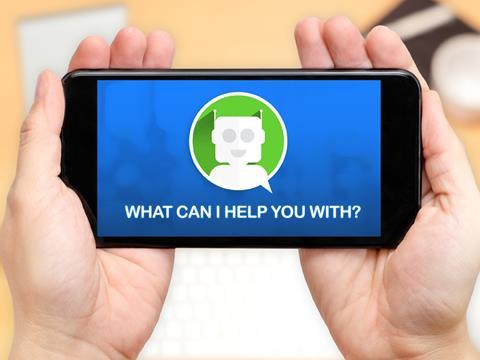
Supermarkets are the “latest to capitalise on the chatbot craze,” says John Heald, Global VP at SAP Hybris. “Chatbots are starting to demonstrate their value in helping to deal with repetitive e-commerce tasks, helping customers with grocery shopping by finding products, recommending items, reminding users of specific products at a certain time, create a shopping list, add products to their shopping cart and complete a checkout.”
It’s precisely why “without a doubt, chatbots are going to make retailers sit up and rethink how they convey range, brand and price with their customers,” says Bill McKimm, director, business development at ThoughtWorks Europe. “Take online grocery shopping - retailers used to put so much weight behind how they structure their range navigation, hoping to provide simple online journeys for their customers and capitalise on the upsell or cross sell. Trying to predict buying behaviour will become less relevant as more journeys start through a human-bot conversation.”
He adds that if you “couple this with areas such as recipes being provided through single word usage or emojis, and enhancing your customer service experience with a deeply intuitive bot and you suddenly get a feel for how ChatBot investment will be a key area for software development over the next 10 years.”
AI is opening doors to new and promising ways for grocery businesses to engage with consumers, improve the customer experience and carve out savings for themselves,” says Matthew Rhodus, director at Netsuite. “But despite the excitement, it’s clear that the journey to AI will be more of a marathon than a sprint. Consumers may think of AI as a fully-fledged automated robot assisting them in-store and online, but the reality is that for a long time many aspects of AI will be largely invisible to customers.”
Just as well, says says Jo Causon, CEO of The Institute of Customer Service. “Our research shows customers are willing to pay more for better service - a friendly conversation at the till can increase spend by 42%. This means, whilst chatbots and self-checkouts can address their desire for speed and efficiency, the impact on the bottom line of an empathetic, personal approach cannot be ignored.”
The ultra personalised promotion
Personalised advice and adverts make digital ever more intimate

Increased use of AI will take “programmatic advertising to a new level,” says Peter Brady at Orbital Media. As an example he says P&G has used AI to create a ‘Skin Advisor’ service for its Olay brand, which uses AI to “help women learn more about their skin, what it needs and then the right skincare products to help.” It’s been used over 80 million times since it was launched last September and “shows how AI can lead to conversational marketing similar to the experience customers would expect from a store.”
It also delivers a huge amount of “pure gold” customer insight.”It’s not just about gaining data on consumers’ needs, skin types and trends but it’s also the vast scale of data that will be at the brand’s finger tips and can be translated into accurate trend forecasting and consumer demands. This is where AI makes a difference with its sophisticated ability to absorb large amounts of diverse data and churn it into valuable information.”
He also says digital ads will get even more sophisticated. “Consumers are already aware of this type of technology used in other sectors, like Netflix. Their use of algorithms provides users with improved suggestions that in turn maintains subscription usages. Similarly, AI and deep learning can take information from lots of different data sets and use it to detect trends in order to serve highly personalised adverts. This can go as far as determining which product to promote, through to what type of creative is displayed. This can only serve to increase click through rates and potentially provide very low cost per click through rates for advertisers.”
So while fmcg brands have “historically been slow to adopt new technology”, Tim Redgate, co-founder of EchoMany says he has seen an “influx of brands changing their engagement strategies, using videos personalised with publicly available information. And artificial intelligence will add another layer of relevance and sophistication to these campaigns. It’s all about enhanced one-to-one interaction with customers via real-time personalised video to create brand loyalty in a time when every supermarket is just as readily available as the next.”
The cashless, queueless shop
Computer vision, sensor fusion and deep learning combine in Just Walk Out tech
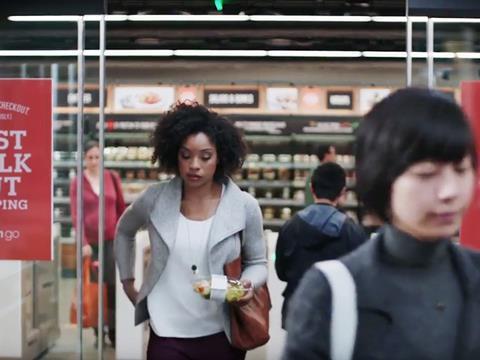
When Amazon unveiled Amazon Go in December 2016 the clue to its biggest selling point of its first real grocery store was in the name. Basically, there were no queues. Just walk in, pick your shopping and Go. The “pure artificial intelligence based grocery store uses special technologies to confirm your purchase it calls Just Walk Out Technology, which includes computer vision, sensor fusion, and deep learning,” says Peter Brady at Orbital Media.
Essentially the store detects who you are and what you pick up from the shelves (and whether or not you put it back). What it adds up to is a tech-heavy way to eliminate queues altogether, something Amazon’s newfound rivals have been trying, and failing, to do for years. “UK retailers simply don’t have the courage, the ambition or the culture that allows for brave innovation,” says Bill McKimm, business development director at ThoughtWorks Europe. “The cashless shop and the impact of automation will transform every aspect of food retailing and grocery retailers really need to put technology and innovation at the centre of their organisation. When the innovation cycles outside the organisation are faster than those inside your organisation, you really have got a fatal problem.”
And they don’t need to copy Amazon’s approach and “go cashier-less to compete,” says Vijayanta Gupta, retail industry strategy director at Adobe. “Technologies such as AI, wearables, location beacons and mobile wallets will help all kinds of retailers to master customer experiences.”
In fact, the only snag is that it doesn’t work. Although a video released to mark the opening in December 2016 made headlines, progress since has been absent and Amazon postponed opening the store to the public in March, reportedly because when more than 20 people were in the 1,800 sq ft store everything went haywire.
The hyper-efficient HR team
Unilever takes the lead in using AI to find the best person for the job
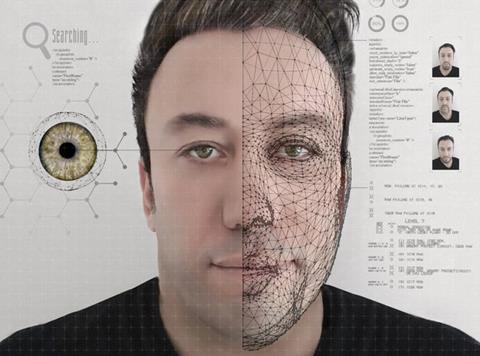
With justified fears that AI will inevitably cost real humans their jobs, it’s ironic that one crop of people feeling the AI pinch may soon include those doing the hiring. In June it emerged that Unilever, home of some of the brightest minds in fmcg, was turning to AI to help it recruit some more. It posted targeted ads on career sites like LinkedIn and social media sites like Facebook and asked anyone who clicked on them to fill out a brief application. Half don’t make it to the next stage. Those that do get to play a dozen neuroscience based games (testing things like memory and focus under pressure) which culls another half, say Unilever. The successful ones go through to a video round where they are asked typical interview questions (AI assesses their vocabulary, speed of response and expressions). Finally at the very final stage, humans get involved.
“Hiring can be a very time consuming thanks to inefficiencies and the massive amount of information that people have to sift through,” says Naji El-Arifi, head of innovation at Salmon. “By using AI businesses could accumulate and sort through a range of top results. Suddenly you would be looking at the top applicants that you have programmed the AI to look for.”
It’s certainly working for Unilever. The initiative started in North America in 2016. Applications tripled, the time taken from application to hire shrunk from four months to one, job offers to final round candidates went up from 63% to 80% and the cost of recruitment has gone down thanks to the amount of time spent by recruiters plunging by 75%. Unilever also says there was a “significant increase” in hiring non-white applicants, presumably because bias, unconscious or otherwise, is removed from the equation. It’s now been rolled out across 68 countries, resulting in 250,000 applicants.
The super connected supermarket
Spaces around shoppers will become smart
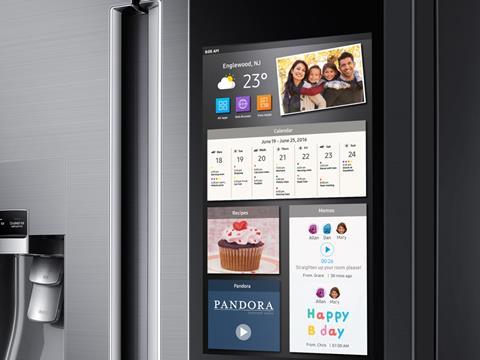
The internet of things has been discussed as a concept for years but largely for home-based devices, like a smart fridge that would warn you when the milk was off. But Amazon’s purchase of Whole Foods, combined with its trial of the IoT heavy Amazon Go store, has led to predictions that the IoT is headed for physical stores, starting with Whole Foods. The deal is a “key evolutionary stage in grocery’s relationship with the Internet of Things,” says Cameron Worth, founder and director of Internet of Things agency, SharpEnd, “as is Apple’s imminent operating system update which will add NFC tag reading functionality to the iPhone 7 and 7 Plus. Apple’s ability to influence consumer behaviour will help make ‘tap to’ the break-through IoT technology of choice for consumer product manufacturers.”
But he thinks the concept of Smart Spaces (where the space around a product is activated to deliver intelligent services and experiences, as in the Amazon Go store) is the one to watch. “Smart Spaces will transcend ‘tap to’ NFC propositions and become more embedded - with sensors populating retail stores, bars, hotels, festivals and nightclubs,” he says. “Amazon is determined to be the first to fully achieve this in retail but the whole grocery retail sector should be looking closely at how the IoT will deliver more personalised customer data and revenue efficiencies.” Research earlier this month by the IGD said that “37% of food and grocery companies are already trialling or have successfully deployed IoT products or services, with a further 58% planning to increase their use of technology providers to help them embrace IoT opportunities.” technology special artificial intelligence








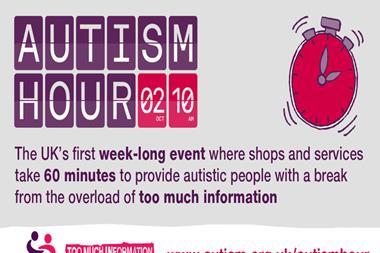
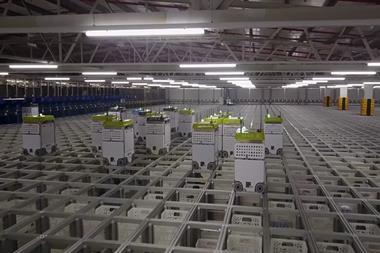


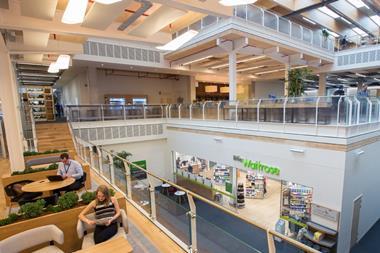






No comments yet